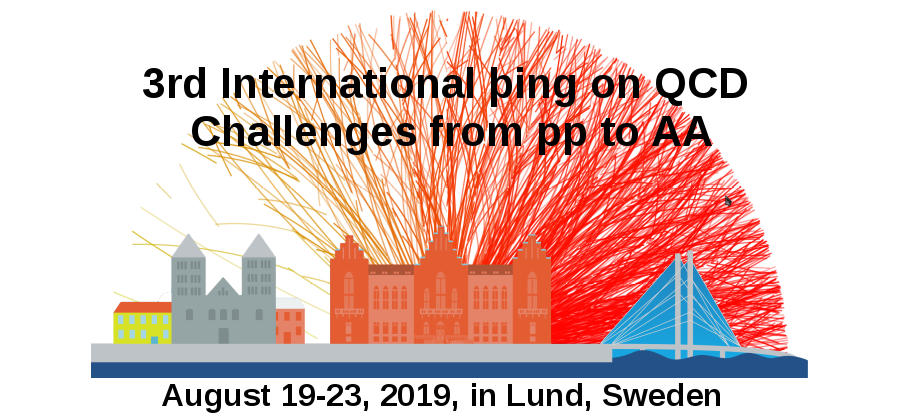March 30, 2020: The preprint for the write-up of the workshop can be fond here.
A þing (thing): an assembly of free men and women with the purpose to solve disputes.
This is the third workshop in the series “International Workshop on QCD Challenges from pp to AA”. The two first workshops were in Taxco:
https://indico.nucleares.unam.mx/event/1010/
and Puebla:
https://indico.cern.ch/event/617445/
The aim of this workshop series is to discuss the progress on the understanding of the dynamics in dense QCD systems, like those, which can be created in high multiplicity pp and pA collisions.
Dates:
August 19-23, 2019.
Where:
Lund, Sweden. It will be held at the University.
Goal and basic idea:
The objective with the structure of the meeting is to have something really interactive and that is why we call it a þing. People should not reuse their old talks but spend some time to think and sharpen their arguments and come to the þing prepared for a CLASH!
The concrete goal of the þing is to discuss 6 topics (relevant for the CLASH project) in detail. Each topic will have ~7-8 people working on it during the þing. The goal is to as concretely as possible define experimental measurements/developments of new methods and theoretical calculations/predictions/developments needed to make substantial progress on each of the topics. This will hopefully be valuable input to both the CLASH project and the community.
Important: It is very important that each participant, before the þing, prepares a poster that address one aspect of the synopsis. If the poster is ready at least one week before the workshop starts, we can print it for free in Lund. Details will be circulated later.
Important: all participants have to be present and active for the full period of the þing!
Topics, confirmed convenors and local responsibles (secretaries):
1) In what way does the initial state and stages of a collision imprint itself on the final state observables? And how can we distinguish different models of the stages of evolution in nuclear collisions?
- Synposis (pdf)
- Mark Mace (University of Jyväskylä)
- Andreas Morsch (CERN)
- Secretary: Christian Bierlich, Christopher Plumberg
2) In what way are QGP like effects in small systems related to each other?
- Synposis (pdf)
- Anthony Timmins (University of Houston)
- Aleksas Mazeliauskas (Heidelberg University)
- Secretary: Alice Ohlson
3) Is there jet quenching in small systems, and can we measure and calculate it?
- Synopsis (pdf)
- Peter Jacobs (LBNL)
- Urs Achim Wiedemann (CERN)
- Secretary: Leif Lönnblad
4) How does the hadronization process depend on the properties of the hadronizing system?
- Synopsis (pdf)
- David Chinellato (Unicamp)
- Rainer Fries (Texas A&M University)
- Secretary: Peter Christiansen
5) What is the role of heavy quarks in establishing the underlying physics mechanisms in small or large systems?
- Synopsis (pdf)
- Anton Andronic (University of Münster)
- Ralf Rapp (Texas A&M University)
- Secretary: David Silvermyr
Registration: Registration is open.
Local organizing committee:
- Christian Bierlich
- Peter Christiansen
- Leif Lönnblad
- Alice Ohlson
- Christopher Plumberg
- David Silvermyr



Credits: the Lund graphics used in the conference logo was originally made by Eamonn Maguire from Antarctic Design for the LHCP 2019 conference. The track graphics used in the logo was made by the ALICE experiment.

